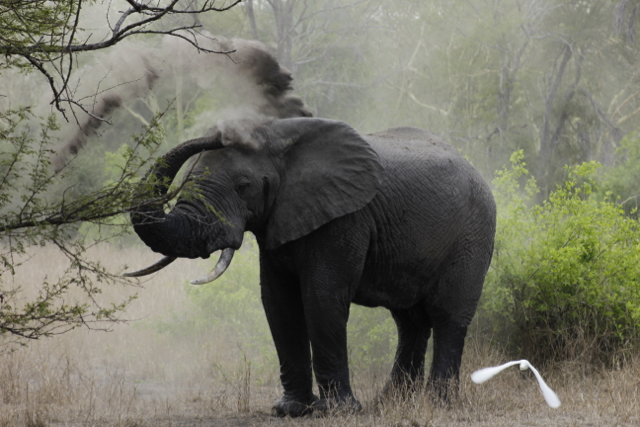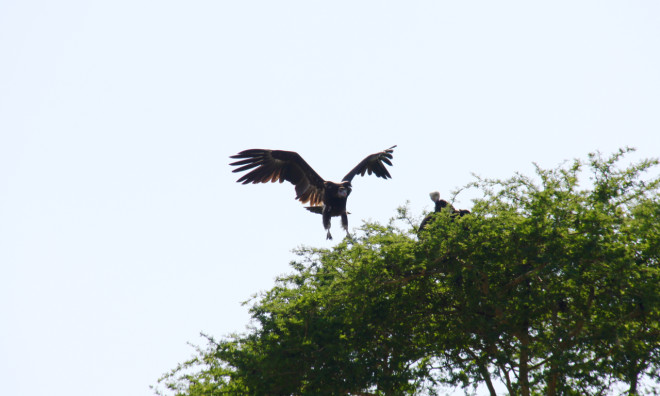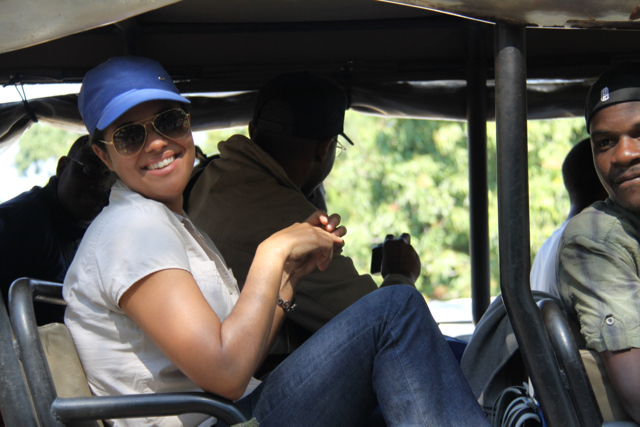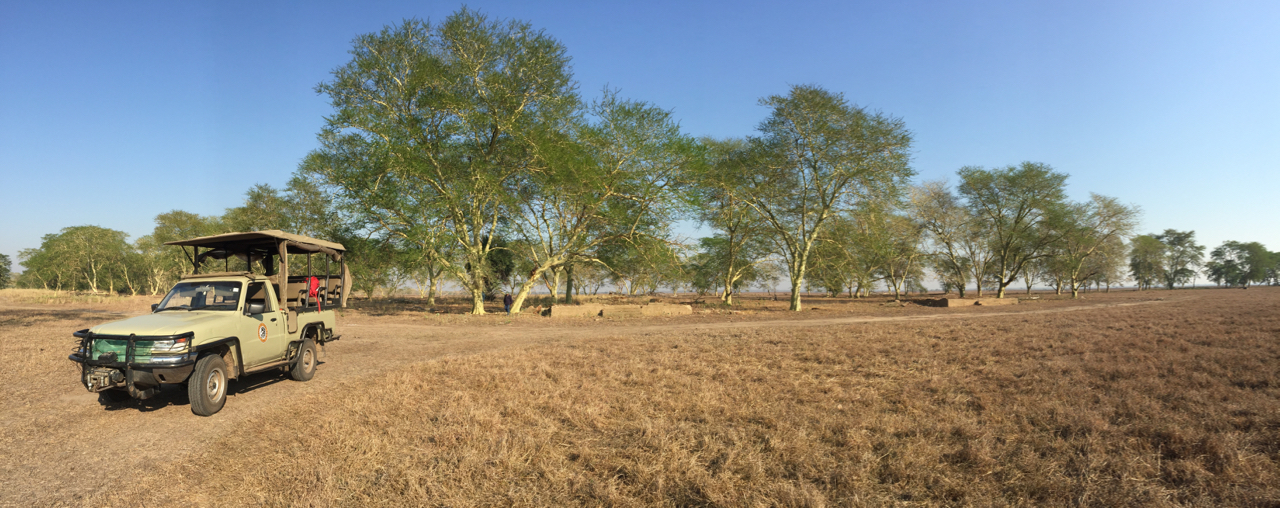During the Mozambican civil conflict, the country’s large mammal population was decimated as almost 95% of them were killed. As you can imagine, this had a profound impact on all aspects of the ecosystems in the country. As our Next Gen students navigate the complex interplay between the species that live in this part of Mozambique as well as the dynamic relationship between ecosystems and humans, Lelani pauses to reflect on their recent safari in Gorongosa National Park where all their theoretical classroom knowledge was brought to life.
Africa is synonymous with safari. We are a diverse group on the open vehicle; some have never had this experience. Conversations are hushed, we all know that making too much noise will scare away the flimsiest nyala. We pass the sand forest, enter the termite woodland and then the magic starts happening. The magic that Mother Nature has reserved only for Africa.
A crocodile lazing in the water at a bend in the Rio Mussicadzi, waterbuck crossing in the distance. I think waterbuck were one of the first of the ungulates to recover their populations way back in 2005 in Gorongosa, and did so relatively quickly. Our guide, Macadonna firmly believes that word got out amongst waterbucks, probably around a water cooler somewhere outside the Park, that here on the plains in Gorongosa, life is good. So they all came.
We move on to Casa dos Leöes (The Lion House) with the most amazing view of Mount Gorongosa in the distance. The mountain is sacred to the locals, their origins tied to its legacy as it serves as the view of their cosmos. My mind starts drifting thinking about existential matters, but even then I must appreciate how imperative the protection of this watershed has been and the incredible foresight it must have taken. Twenty years down the line, it has led to the recovery of most herbivore populations, a stable predator network of apex and semi-apex predators, as well as birds of prey. And there’s proof. A lion relaxing on a fallen camelthorn tree, three vultures circling above. They probably had warthog for lunch. Guessing that things aren’t so amorous between Simba and Pumba around here!
We move further, past a small patch of yellow fever forest, with their self-sacrificing trees. These stands, although not a natural phenomenon, used to be extensive. But with the recovery of elephant populations, they’ve shrunk, these mesmerizing ecological engineers stepping in, literally, and fixing a problem created by us humans. Just like other grazers that have decreased the fuel load significantly, effectively allowing the for successful reintroduction of wildebeest and water buffalo. Can you believe that a decade ago, they had to do controlled burns to foster conditions for regrowth? Now the antelope mow the lawn. Relax people, they have got this.
I get drawn back into the conversation, they’re discussing a new community lodge that is currently being designed here in the park. We are here to learn from some of the best, and today, it’s more than apparent that here in Gorongosa, they’ve got this.
 Lelani Mannetti is from Namibia and is a Masers Candidate in Conservation Ecology at Stellenbosch University in Windhoek, South Africa. Her focus in her Masters has been studying communities living adjacent to national parks and is studying the Khomani Bushmen in the southern Kalahari. As she moves into her doctoral research, she will be examining the communities surrounding Etosha National Park in Namibia.
Lelani Mannetti is from Namibia and is a Masers Candidate in Conservation Ecology at Stellenbosch University in Windhoek, South Africa. Her focus in her Masters has been studying communities living adjacent to national parks and is studying the Khomani Bushmen in the southern Kalahari. As she moves into her doctoral research, she will be examining the communities surrounding Etosha National Park in Namibia.

